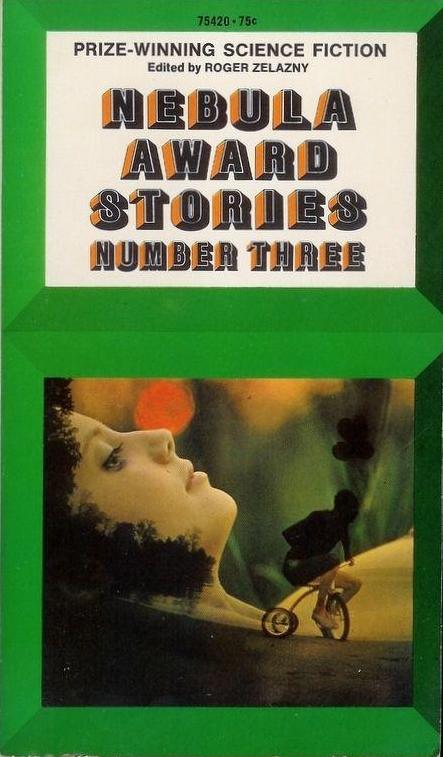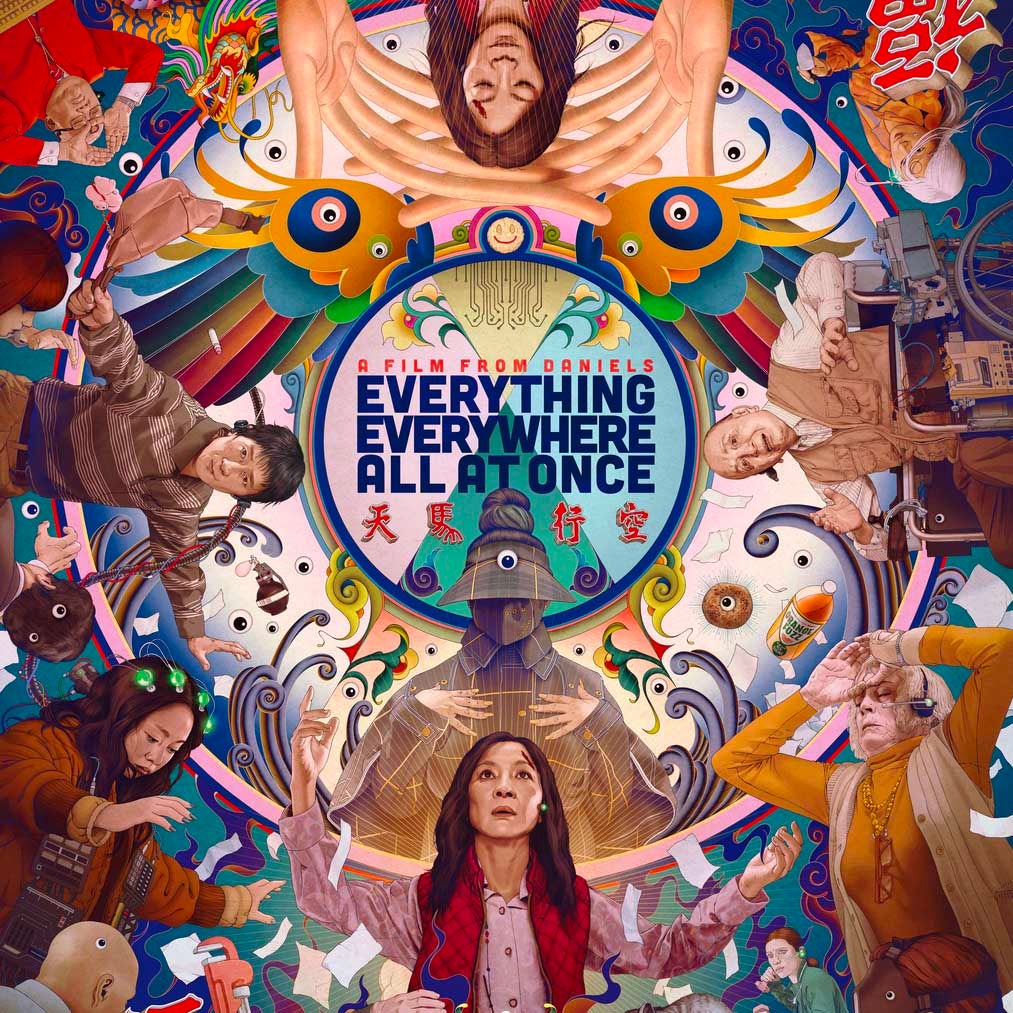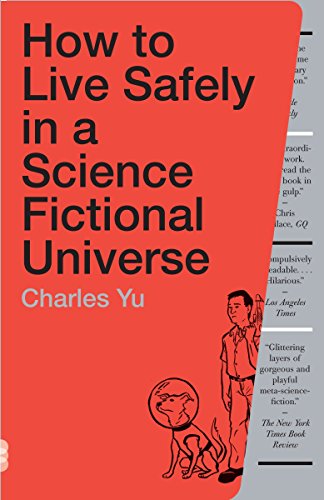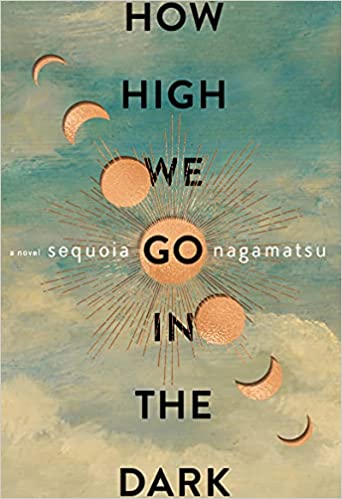
(Post by Nora Sullivan Horner)
1) what made you choose the book you did
I wanted an anthology of short stories for the same reason that Professor Saiber has chosen to almost exclusively assign short stories: to get exposure to as many samples of SF writing as possible. The first page reads: “This selection of the best science fiction stories of 1967 was chosen by ballot by the 200-member Science Fiction Writers of America.” This self-description appealed to me since I wanted a vetted anthology with well-established authors and it turned out that we’ve read a good portion of the featured authors.
2) what the book is about
A short description on the first page reads: “[The stories in this book] comprise what has been aptly called folk literature of the machine age, as they examine the basic elements of man’s nature in terms of the expansions of science and human awareness.” I thought this classification as “folk literature of the machine age” was a sharply clever characterization of this genre, one with which I’d agree.
This book contains seven stories, an introduction and afterword from Zelazny, and a demi-appendix listing the Nebula-award winners from 1965 to 1967. The stories and their authors are as follows: “The Cloud-Sculptors of Coral D” by J. G. Ballard, “Pretty Maggie Monkeyeyes” by Harlan Ellison, “Mirror of Ice” by Gary Wright, “Weyr Search” by Anne McCaffrey, and the three Nebula winners “Aye, and Gomorrah” by Samuel Delany, “Gonna Roll the Bones” by Fritz Leiber, and “Behold the Man” by Michael Moorcock.
In this book review, for each story I’ll give a seductive, seven-word synopsis (SSS), discussion of its style and themes, favorite lines, whether I recommend it, and how I rank it compared to the other stories included. The recommendation scale numbers one to five according to the following scale: one means actively avoid for fear of psychic damage; two means read at your own risk of pointed displeasure; three means there is ambiguous gain if you feel compelled to read the story; four means reading is encouraged if you want a solidly good, entertaining, or eye-opening story; five means reading is almost required for an enlightening experience. The two scales don’t necessarily correspond with each other; I may dis/like a story that still ranks high/low when held in comparison.
NUMBER ONE: “The Cloud-Sculptors of Coral D” by J. G. Ballard
- SSS: Men sculpt and die for eccentric widow.
- Style and themes: beautiful, witty turns-of-phrase that wake up the reader on the page; whimsical in its plot, characters, and details. Themes/tropes include: a “beautiful but insane woman,” alternate worlds, psychology, landscape editing/small scale engineering (via old school and new school tech, gliders and iodine crystal spray), [new weird?].
- Favorite lines and good vocab words:
- “The hunchback nodded encouragingly to me, his eyes lit by an astronomy of dreams” (3).
- “Her strong and elegant face seemed sealed within the dark glass of the limousine like the enigmatic madonna of some marine grotto” (6).
- “‘Clouds, Beatrice? Those are tigers, tigers with wings. We’re manicurists of the air, not dragontamers’” (9).
- “‘You’re very mysterious. Such as?’ ‘She played games with her eyes. ‘I’ll tell you in a month’s time when my contract expires. Now, when are your men coming?’” (10).
- “With the diamonds fixed around her eyes she reminded me of some archaic priestess. Beneath the countour jewelry her breasts lay like eager snakes” (11).
- “She was looking up at her [cloud-hewn] portrait as it began to break up over the lake, seeing it for the first time. The veins held the blood in her face” (12-13).
- “Leonora was wearing an evening dress of peacock feathers that lay around her legs in an immense train. The hundred of eyes gleamed in the electric air before the storm, sheathing her body in their blue flames” (14).
- “In her face the diagram of bones formed a geometry of murder” (15).
- “After the spectacle of this death within the exploding replica of their hostess’s face, the guests began to leave” (16).
- “…I found a shallow basin among the dunes where sonic statues had run to seed beside a ruined studio….His companion was squatting by the sonic statues, twisting their helixes so that their voices became more resonant….Disturbed by the noise, the statues had begun to whine” (2, 13).
- Vocab:
- Laconic – using or involving the use of a minimum of words; concise to the point of seeming rude or mysterious
- Droll – having a humorous, whimsical, or odd quality
- Nubile – of a marriageable condition or age; sexually attractive—used of a young woman
- Giocanda –
- Nacreous
- Toque
- Quay
- Chatelaine
- Rictus
- Recommendation and ranking: I give this story a 3.5. Out of the collection, I rank it as number two.
NUMBER TWO: “Pretty Maggie Moneyeyes” by Harlan Ellison
- SSS: morbid colonizer and Native gambling sex fantasy
- Style and themes: I thought the Zelazny introduction described Ellison’s writing in this story aptly: “His prose is as stark as a skull by Georgia O’Keefe and as steady as a jackhammer.” Wildly imaginative in a way that weaves webs between the mundane and the elevated in a seamlessly coherent way. Themes/tropes include: computers, dimensions, disaster, drugs, games, immortality, media landscape, perception, psychology, sex/gender, new weird(?).
- Favorite lines and good vocab words:
- “Long legs, trim and coltish; hips a trifle large, the kind that promote that specific thought in men, about getting their hands around it; belly flat, isometrics; waist cut to the bone, a waist that works in any style from dirndl to disco-slacks; no breasts—all nipple, but no breast, like an expensive whore (the way O’Hara pinned it)—and no padding…” (20).
- “Amazing cheekbones, the whole face, really; simple uplifted eyes, the touch of the Cherokee, eyes that looked out at you, as you looked in at them, like someone peering out of the keyhole as you peers in; actually, dirty eyes, they said you can get it” (21).
- “Hair, the way a man wants it, so he can dig his hands in at the base of the neck and pull all that face very close an operable woman, a working mechanism, a rigged and sudden machinery of softness and motivation” (21).
- “Maggie, Maggie, Maggie, pretty Maggie Moneyeyes, who came from Tucson and trailers and rheumatic fever and a surge to live that was all kaleidoscope frenzy of clawing scrabbling no-nonsense. If it took lying on one’s back and making sounds like a panther in the desert, then one did it, because nothing, but nothing, was as bad as being dirt-poor, itchy-skinned, soiled-underwear, scuff-toed, hairy and ashamed lousy with the no-gots. Nothing!” (21-22).
- “And the old dealer, who could no longer cut it at the fast-action boards, who had been put out to pasture by a grateful management” (23).
- “Somewhere, a connection was made, and electricity, a billion volts of electricity, were shot through Kostner. His hair stood on end, his fingertips bled raw, his eyes turned to jelly, and every fiber in his musculature became radioactive” (23).
- “It was a leathery grin; something composed of stretched muscles and conditioned reflexes, totally mirthless” (24).
- “From somewhere, not in the Casino room, he heard a tinkle of rhodium-plated laughter” (24).
- “Men stared after her as she walked. She carried herself like a challenge, the way a squire carried a pennant, the way a prize bitch carried herself in the judge’s ring. Born to the blue. The wonders of mimicry and desire” (26).
- “She had to keep the patina of the world off her, had to remain clean and smooth and white. A presentation, not an object of flesh and hair. A chromium instrument, something never pitted by rust and corrosion” (27).
- “Suddenly total cellular knowledge….a soundless owl of frenzy trapped in a cave of prisms….overhead the odor of stop…. this is the stopover between hell or heaven….trapped and doomed alone in a mist-eaten nowhere” (28).
- “He was in his late fifties, a velvet-voiced man whose eyes held nothing of light and certainly nothing of kindness” (29).
- “…he was numb, partaking of the action around him only as much as a drinking glass involves itself in the alcoholic’s drunken binge” (29).
- “…the gamblers with poached-egg eyes who had been up all night, the showgirls with massive breasts and diminutive sugar daddies…” (30).
- “I’ve been waiting for you. A long time, I’ve been waiting for you, Kostner. Why do you think you hit the jackpot? Because I’ve been waiting for you, and I want you. You’ll win all the jackpots. Because I want you, I need you. Love me, I’m Maggie, I’m so alone, love me” (30).
- “Hartshorn’s smile was a stricture….Hartshorn’s smile became hieroglyphic, permanent, stamped on him forever” (33).
- “…blue eyes deep as the past, misted with a fine scintillance like lavender spiderwebs; taut body that was the only body Woman ever had, from the very first” (35).
- “And she came to him, fully. Her body was a declaration of truth and trust such as no other Kostner had ever known before. She met him on a windswept plain of thought, and he made love to her more completely than he had known any passion before. She joined with him, entered him, mingled with his blood and his thought and his frustration, and he came away clean, filled with glory” (36).
- “There was a terrible shriek, of tortured metal, of an express train ripping the air with its passage, of a hundred small animals being gutted and torn to shreds, of incredible pain…” (37).
- Vocab (interesting stylistic choice = underlined)
- Many-colored
- Bindlestiff
- Popped for
- A tot too much
- Allathat
- Vale
- Rheumatic / rheumy
- Vomity
- Cuculiform
- Pealed
- Resigned-weary
- Recommendation and ranking: I question whether the content of this story classifies it as SF or if it was considered so because Ellison is a SF writer; the role of tech is minimal and wholly unexplained, so much so that it bypasses even a fantasy category and plunges into a hallucinogenic, gravity-unbound drug-trip. I give this story a 3. Out of the collection, I rank it as number three.
NUMBER THREE: “Mirror of Ice” by Gary Wright
- SSS: adrenaline junkie meets Nascar meets Winter Olympics
- Style and themes: one moment to the next narration, fast-paced and vivid. Like the previous story, less and less identifiably (obviously) SF; touches no listed themes.
- Favorite lines and good vocab words:
- “[the sled] was a mean-looking missile, low and lean” (41)
- “This was what had changed bobsledding into…this: this special thing with its special brotherhood, this clan apart, this peculiar breed of men set aside for the wonder of other men. The Kin, they called themselves” (41).
- “…someone once, laughing, had said, ‘Without peer, we are the world’s fastest suicide” (41).
- “Simply open his canopy, that was the signal, and when the start came the other sleds would dive down and away and he would be sitting here alone. But, God, so alone! And he would be alone for the rest of his life. He might see some of the Kin again, sometime, somewhere. But they would not see him. It was a kind of death to stay behind…and a real death to go. Death, the silent rider with every man in every race…” (42)
- “…and it had to be that way. On the course sleds crashed and were no more….Only later, in the valley, were there men missing” (43).
- Of these sixteen, chances were that nine would finish. With luck, maybe ten. And chances also said that only fourteen of these men would be alive tonight. Those were the odds, as hard and cold as the ice, the fascinating frosting for this sport. Violent death! Assured, spectacular, magnetic death in a sport such as the world had never known. Incredible men with incredible skills doing an incredible thing” (43).
- “Was that why they did it?…yes, always that question: ‘Why do you do it?’ And before he had died on the Plummet, Sir Robert Brooke had told them, ‘Well, why not?’ (43)
- “No, there were no quitters here; only the doers or the dead. And which was he going to be tonight?” (47)
- “The Jackhammer smoothed out and plunged downward, and they were hurtling now into the Wingover at over 90 mph. Here were the second biggest grandstands on the course, the second greatest concentration fo cameras. Here two ambulance helicopters stood by, and a priest too. The Wingover…” (47)
- ‘Remember when Otto Domagk left Cripple’s Corner in that snow storm?’ ‘Ya, und ven him was dogged out—Vas? Two hours?—he was so sleeping.’” (47)
- “…how many were dead now? Himself and how many others? But it wasn’t fear of death—what was it? What was it that he’d walled off inside—that something secret always skirted as carefully as a ship veers from a hidden reef, knowing it is there—what? And now the wall was down, and was facing….” (48)
- “Here were the biggest grandstands and the most hungry eyes of the cameras. Here there were three clergy, and emergency operating rooms. Here……here he would complete the formality of dying” (48)
- “…and that was it; you kept trying. Over and over. No matter how many times you faced yourself it had to be done again. And again. The Self was never satisfied with single citifies—you had to keep trying…And he was empty no more” (49)
- The entire ending conversation!
- Vocab
- Cantilevered
- Steaking [into]
- Recommendation and ranking: I give this story a 3. Out of the collection, I rank it as number six.
NUMBER FOUR: “Aye, and Gomorrah” by Samuel Delany
- (I’m skipping this story because we read it as a class, and, honestly, because I found the other ones more compelling to discuss more deeply—Delany’s story isn’t one of my personal favorites.)
- Recommendation and ranking: I give this story a 4. Out of the collection, I rank it as number one.
NUMBER FIVE: “Gonna Roll the Bones” by Fritz Leiber
- SSS: Tim Burton nuclear family man battles bread
- Style and themes: Wacky, swanky, engaging. High paced, exciting, unpredictable. New weird(?); aside from that touches on no SF themes. Like the previous ones, very difficult to immediately conceive of as SF.
- Favorite lines and good vocab words:
- (In the introduction): “It is timeless, though, and like all such things, timely” (62)
- “The night was up-side-down deep among the forstoy stars” (64)
- “Down below it looked as if the whole town of Ironmine had blown or buttoned out the light…” (64)
- “…it occurred to him that something deep down inside him had for relays been planning things so that he and the house and his Wife and Mother and Mr. Guts would all come to an end together” (64)
- “Every tight-locked atom of the place was controlledly jumping. Even the dust motes jibed tensely in the cones of light” (66)
- “Back a little from the other end was the nakedest change girl yet and the only one he’d seen whose tray, slung from her breasts, was stacked with gold in gleaming little towers with jet-black chips. While the dice-girl, skinnier and taller and longer armed than his Wife even, didn’t seem to be wearing much but a pair of long white gloves. She was all right if you went for the type that isn’t much more than pale skin over bones with breasts like china doorknobs” (66)
- “Joe traded all his greasy dollars for an equal number of pale chips and tweaked her left nipple for cut. She playfully snapped her teeth toward his fingers…” (67)
- “Behind the man in black was a knot of just about the flashiest and nastiest customers, male or female, Joe had ever seen. He knew from one look that each bediamonded, pomaded bully had a belly gun beneath the flap of his flowered vest and a blackjack in his hip pocket, and each snake-eyed sporting girl a stiletto in her garter and a pearl-handled silver-plated derringer under the sequined silk in the hollow between her jutting breasts” (67)
- “Or like silver space-liners with dozens of jewel-flamed jets, their portholes a-twinkle like ranks of marshaled asteroids” (68)
- “‘Or Miss Flossie here can kiss you to death.’ He drew forward beside him his prettiest, evilest-looking sporting girl. She preened herself and flounced her short violet skirt and gave Joe a provocative, hungry look, lifting her carmine upper lip to show her long white canines.’” (82)
- 83
- “Then her turned and headed straight for home, but he took the long way, around the world” (83)
- Recommendation and ranking: I give this story a 2.5. Out of the collection, I rank it as number seven.
NUMBER SIX: “Behold the Man” by Michael Moorcock
- SSS: two atheists and time-traveling Jesus role play
- Style and themes: a mixture of modern and bible-adjacent prose; flowery and pragmatic. Told in the way someone would speak and whose words would later be written, much like those older stories in those older books. Themes include alternate history, humor, identity, memory, religion, satire, slavery (vaguely), time travel, messianic alien (almost), travel log (kind of, more of a narration, but snips and pieces, not written by anyone to anyone, but seems journal-adjacent)
- Favorite lines and good vocab words:
- “‘The followers of this man do not think at all; he was their act of spontaneous creation. Now he leads them, this madman called Jesus of Nazareth. And he spoke, saying unto them: Yeah verily I was Karl Glogauer and now I Jesus the Messiah, the Christ. And it was so’” (85).
- “Sometimes they questioned him casually about his chariot—the time machine they intended soon to bring in from the desert—and he told them that it had borne him from Egypt to Syria and then to here. They accepted the miracle calmly,. As he had suspected, they were used to miracles’” (95).
- “Chirditianity was merely a stage in the meeting, cross-fertilization metamorphosis of Western logic and Eastern mysticism. Look how the religion itself changed over the centuries, reinterpreting itself to meet changing times. Christianity is just a new name for a conglomeration of old myths and philosophies. All the Gospels do is retell the sun myth and garble some of the ideas from the Greeks and Romans” (101).
- “In this way, as priests had always done, they avoided questions they could not answer while at the same time appearing to have much more knowledge than they actually possessed” (116).
- Recommendation and ranking: I give this story a 3.5. Out of the collection, I rank it as number five.
NUMBER SEVEN: “Weyr Search” by Anne McCaffrey
- SSS: high dragon fantasy, brooding men and strong woman
- Style and themes: Reads as fantasy (I don’t see any SF traits at all); lush, tastefully archaic, slightly sexist through and through. Enjoyable and immersive when you buy into the world (the page is rife with worldbuilding that doesn’t care if you catch on or not.) Themes include: alternate worlds, ecology, biopunk/elfpunk(?), animal-human interaction
- Favorite lines and good vocab words:
- Perihelion
- Addlepated
- Inimitable
- Temporize
- Laconically
- Adroitly
- Vaned
- Pinions
- Claxon
- Recommendation and ranking: I give this story a 4. Out of the collection, I rank it as number four.
I also wanted to give a little attention to the afterword. The most interesting thing Zelazny writes is, after listing some (then) contemporaneous issues, that:
[The problems] are still with us and we don’t have any handy answers. We can only guess at possible outcomes. Science fiction, as I see it, though, isn’t here to provide handy answers. We can only guess at possible outcomes. Science fiction, as I see it, though, isn’t here to provide handy answers. We may comment upon or extrapolate a particular thing, but it doesn’t provide a solution, it simply points a finger. This is what I believe Theodore Sturgeon meant when he referred to a class of stories as being of the “If this goes on—“ type….I am going to tell you that our special form of literature is an invitation, an indication, a pastime….you’re looking at literature, not social commentary. If some of the latter gets mixed in—well, good. It was probably not intentional, though. Like the man who crashes the party, we just want to be on the scene.
I disagree more than I agree with his statement. I agree that science fiction doesn’t provide handy answers because nothing really does, not to the questions of the Vietnam war, big cities, progressive bureaucratization, computerization, outflow of gold, and race relations, as he narrows in on. However, I believe they are critical, if not constructive, meditations on such problems that do indeed have the power to imagine, unapologetically, big solutions to big problems. Not all SF goes in the “if this continues” vein, of course; some deal directly with what to do, not just what may happen. I more strongly disagree with his statement that SF isn’t social commentary; anything that comes from a society is a reflection of that society. There is hardly any writing that could be considered void of social commentary, in my view. SF is definitely close to the heart of what it means to question who we are, what’s around us, the times we’re living in, and the future we’re headed towards. SF is all about society, what happens when it goes wrong, and what may need to happen for things to go right. Maybe his claim that any social commentary found in SF is to be seen as unintentional was true of himself or his close cohort, but as we know, authors were writing about race and gender and the world from the start. And especially now, the idea that science fiction is not also social fiction rings hollow. At least to my ears.
3) what kind of SF it is (style, major themes)
I found the overall, unifying theme to be sheer diversity. None of the stories are really like another, except perhaps “Cloud-Sculptors” and “Aye, and Gomorrah.” The style ranged widely as did each story’s themes—though, through and through, there seemed to be an emphasis on the male. There were themes of expression, exploration, danger/self-destruction/risk, intelligence/satirical, cynical humor, and genuine, engaging storylines, if that can be a theme.
4) what is great about it (if anything) or what is not
I like the collection for its diversity—it expanded my conception of what counts as a “SF” story, but confused me for the same reason. I questioned why people—Zelazny, the panel of judges, the authors themselves—considered these stories to be SF because each successive story strayed further from what I would categorize as SF. In my mind, “Cloud-Sculptors” and “Aye, and Gomorrah” were the only two stories that struck me as explicitly SF, though the latter I won’t discuss thoroughly here to devote more space and consideration to stories novel to the rest of the class. Technology played an instrumental, sort of incidental, role in “Pretty Maggie” and “Mirror of Ice” in that the killer slot machine and the bobsled of death both bore key human protagonists—but they weren’t the focus or focal points in and of themselves. “Gonna Roll the Bones” was where the shift really clicked—I didn’t identify anything that characterized the story as SF, and even less so in “Behold the Man” and “Weyr Search.” The former read more like a short story that was classically modern, full of atheism, cynicism, and self-aware irony. The latter read like the first chapter to a high-fantasy multi-volume book series that it is (Dragonflight is the series’ title.)
I also appreciated the order of the stories. I noticed that the “Cloud-Sculptors” was delightful in its reveling and full embrace of classic SF themes—Gerry-rigged technology for the production of fanciful cloud art, a motley crew of disillusioned inhabitants of a brightly dystopia environment, and a rich, horrible woman to serve as the well-cast though vaguely-motivated antagonist. While the first was utterly thrilling, “Pretty Maggie” was mysterious, slow to grip but once it had its hold on you, you wanted to see the story to the end. “Mirror of Ice” sped the pace up, breathless until the final line. Things slowed down a bit with “Aye, and Gomorrah” given the jerking up-and-down lifestyle of the spacers and the drawn out interaction in Turkey towards the end. “Gonna Roll the Bones” felt like a Halloween special that interjects on your favorite late-night cable channel—a breath of something new, though decidedly different than all the stories that preceded it. And then came “Behold the Man.” This story was long; it was hard to get through for me and I found I had to read it in chunks. The ending was guessable, but nonetheless enjoyable to finally see with your own eyes. It was a little cheesy in how almost played-out it was. I understood, then and there, a little more about Zelazny’s choice of order—I don’t think many readers would’ve stayed with the book if it opened with this story. Likewise, if it opened with “Weyr Search,” I think many people would close the book and check the cover in confusion, to verify that indeed they’d purchases a science fiction anthology and not a fantasy one. The final story was also enjoyable, very engrossing, and picked up pace as you read it—and, at least for me, compelled me to check out the entire series. It has all the elements that make fantasy so enjoyable and does it with a classic flair and style.
That leads me to another through-line that captivated me—though not necessarily for the right reasons. Women. The role of women in each story (again, save “Aye, and Gomorrah”) is as objectionable as it is classic: she is either rich and evil for no reason and for no aim; seductive, greedy, and siren-singing a man to his demise; absent; an enabling sufferer of domestic violence; a pretty/“enjoyable” body and not much else; a sardonic, cynical, atheist, hard-boiled know-it-all; or a powerful independent woman… whose power is almost entirely contingent on characters stronger than her—and still written with enough clutching, clinging, and masculine-eye to the body to raise an eyebrow. I was disappointed at this pattern, but also unusually forgiving given the environment these stories were born from. It was also interesting to see that all but the final author were male.
All in all, I thoroughly enjoyed the selection. Still, I am curious as to why they all qualified in some crucial way(s) as science fiction when, to me, only about four could be considered that, two generously and two indisputably.
5) do you recommend it?
Yes. The book will broaden your definition of science fiction through challenging it, and ultimately, hopefully, will help you hone your eye to what counts as science fiction, and good science fiction at that.
6) make sure to include the full bibliography, original print date, and an image of the book cover
Bibliography: Zelazny, Roger, ed. Nebula Award Stories: Number Three. New York: Pocket Books, 1968.
The editor, Roger Zelazny, is using his real name and is also an award-winning (Hugos and Nebulas) American SF author. To my knowledge the anthology itself didn’t win awards, though some of its constituent stories did.
–Nora Sullivan Horner









